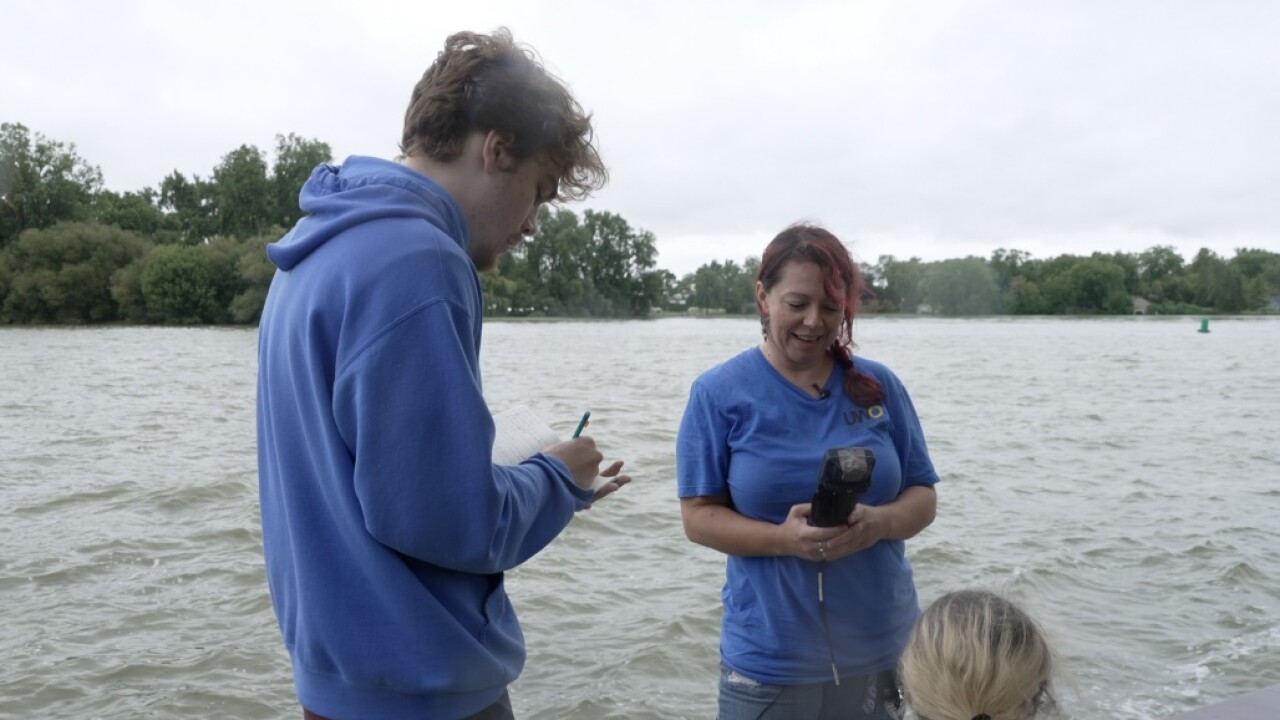OSHKOSH (NBC 26) — Students and professors at the University of Wisconsin Oshkosh are close to completing a research project on blue-green algae in Lake Winnebago– research that could be used to improve water quality for thousands of residents.
- A team of researchers from a wide range of majors and disciplines is collecting data on harmful algal blooms in Lake Winnebago.
- The project began in 2022 and has involved over 50 students
- Their collected information is compiled in an online project website.
(The following is a transcription of the full broadcast story, edited for web)
Taking water samples on Lake Winnebago has been a large part of the Emplacing Algal Blooms to Advance Sustainability Theory and Praxis project team's summers.
Biology professor Bob Stelzer says they've collected hundreds of samples since the project's inception in 2022.
"We measure how much is there, and we measure the amount of toxins they produce," he says.
They're looking at harmful algae in Lake Winnebago, specifically a type of algae often referred to as blue-green algae.
“It’s like an emerald green," Kim Huettl, a student researcher on the project, says. "Sometimes there's like floating mats, it almost looks like globs of paint in the water.”
There's evidence that the algae can make animals and humans sick.
“Over 200,000 people get their drinking water from Lake Winnebago, so even if they’re not swimming or fishing in the lake, lots of people have a stake in the water quality of Lake Winnebago," Stelzer says.
Their goal is to understand the blooms and learn how to predict when and where they will appear.
“As we better understand these blooms, we can take steps to try and reduce their severity," Stelzer says.
Huettl says they believe a significant cause of the algal blooms is nutrient runoff.
“It’s important to know what drives blue-green algae- it’s nutrients getting put into our waterways, which is caused by human developments," she says. "We can work to reduce the amount of nutrient pollution that gets into Lake Winnebago by just changing our land uses.”
Watch the full broadcast story here:
It’s the third year of data collection for the project, and they're working on developing a public exhibit with the information.
The project involves students from a variety of disciplines– from biology to history and social sciences.
"I survey people, interview, see kind of what people’s perceptions are, things like that," Nevaeh Serrano, a sociology major involved with the project, says.
They also have an outreach team, which provides educational research to local schools.
“Keeping people safe, or at least trying to, by stopping them from entering really dangerous water," Will Stevens, a student researcher and member of the outreach team, says. "Our slogan is 'When in doubt stay out'.”
Stelzer says the project shows the value of student-led research projects.
“I think the interplay between research and education is very important," he says. "Getting students out of the classroom and into the field where they can learn skills that can translate into jobs later on.”



